
The Tiger's hull was made of flat plates, many of them vertical, forming a box shape with protruding sponsons at the sides. This simplified model of the hull has been cut open, showing the central plates at their actual thicknesses.
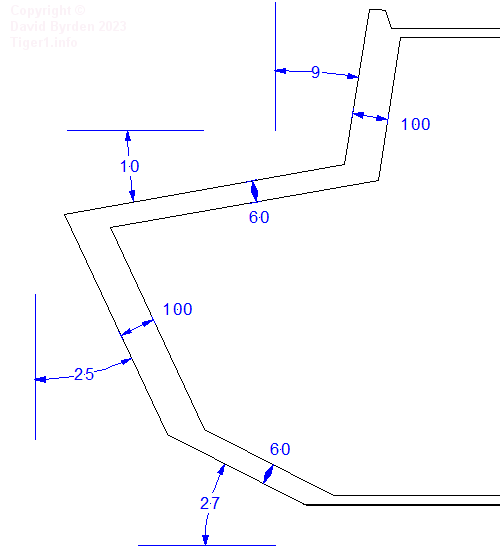
These are the angles and thicknesses of the armour plates at the nose. All of these figures come from German documents. In practice, an armour plate would be one or two millimeters thicker than the specification. The welds at the joints are not represented here; instead we draw idealised plates with geometrically perfect intersections.
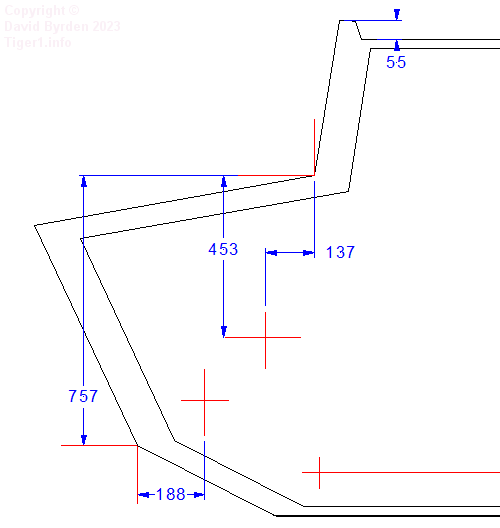
Given the angle data, we need only a few numbers to fully specify the locations of these plates. In this sketch I locate them relative to axes of the suspension that are precisely specified. These distances were derived by measuring one German diagram that is drawn very carefully to scale [3] , and confirmed by measurements of Tigers. The distances that I assert here should be no more than a couple of millimeters off spec, and within manufacturing tolerance.
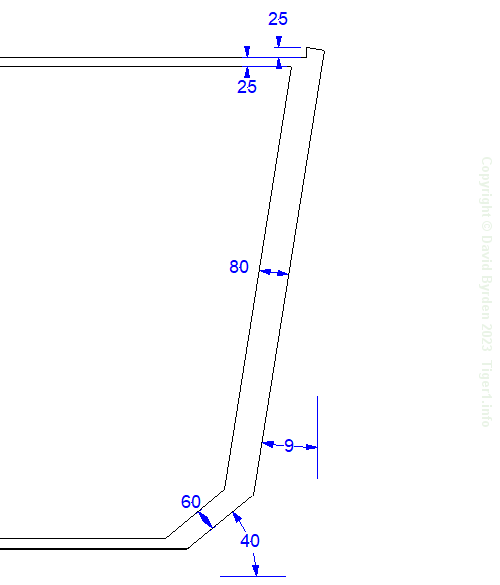
The armour is very thick at the rear of the hull, and once again it protrudes above the level of the roof plate.
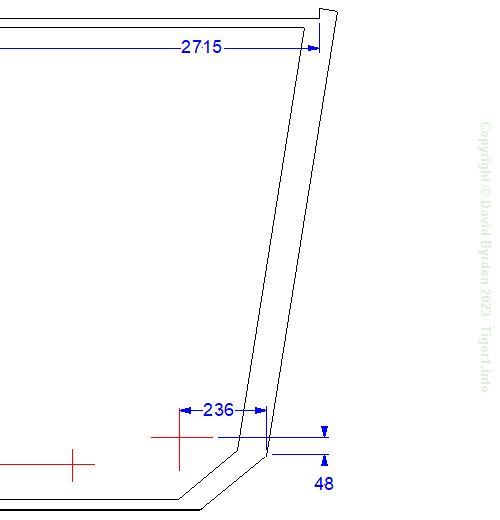
The positions of the rear plates are not so well known to me. At the top, the notch cut into the wall is more important to locate than the wall itself, because the deck panels sit in it. Measurements of museum Tigers differ by several millimeters here.
The small angled plate at the bottom is particularly hard to locate and there is no reliable German drawing to help. I may be several millimeters wrong here. This plate protrudes a few mm beyond the side walls in all Tigers examined.
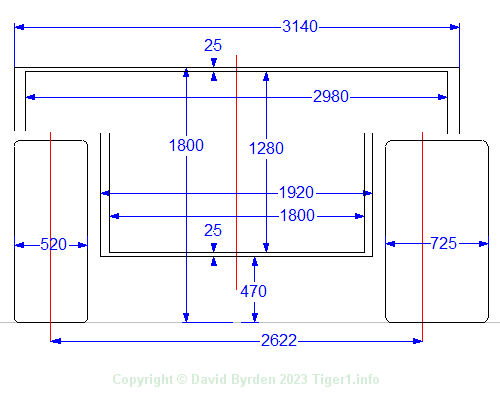
This is a front sectional elevation of the hull. The bottom plate of each side sponson is not drawn because it slants downward from front to rear. The diagram includes examples of both the ordinary track (725mm wide) and the transport track (520mm wide). These dimensions are German ones and they specify a bare hull without external fittings.

It should be noted that the hull's lower side walls protruded 5mm below the belly plate.
[1] Der Panzerkampfwagen VI und seine abarten, Walter J. Spielberger, Motor Buch Verlag
[2] Drawing 3306 : "Untersuchung über Verlademöglichkeit des Tiger E"
[3] Drawing J3154 : "Einbau des ZF. 12 Gang Elektro Getriebe."